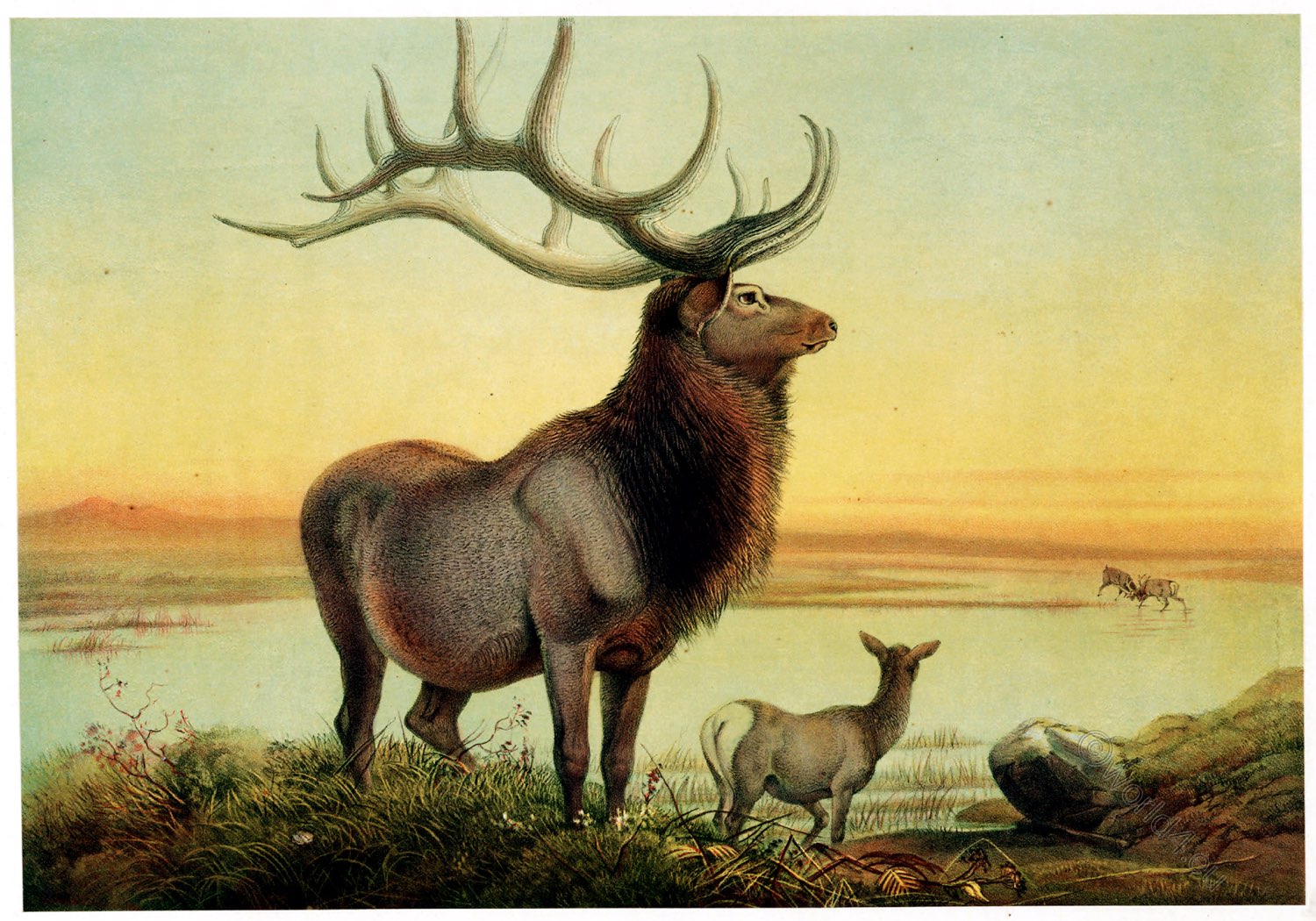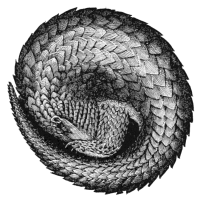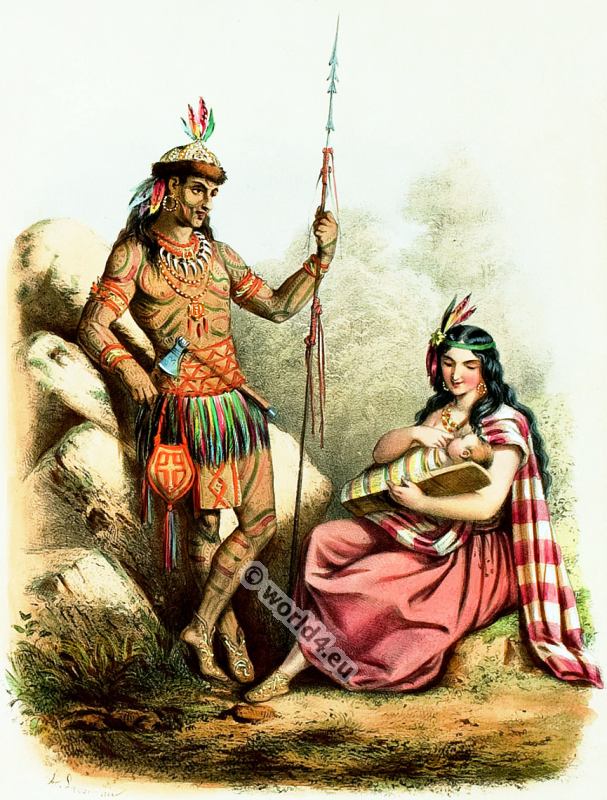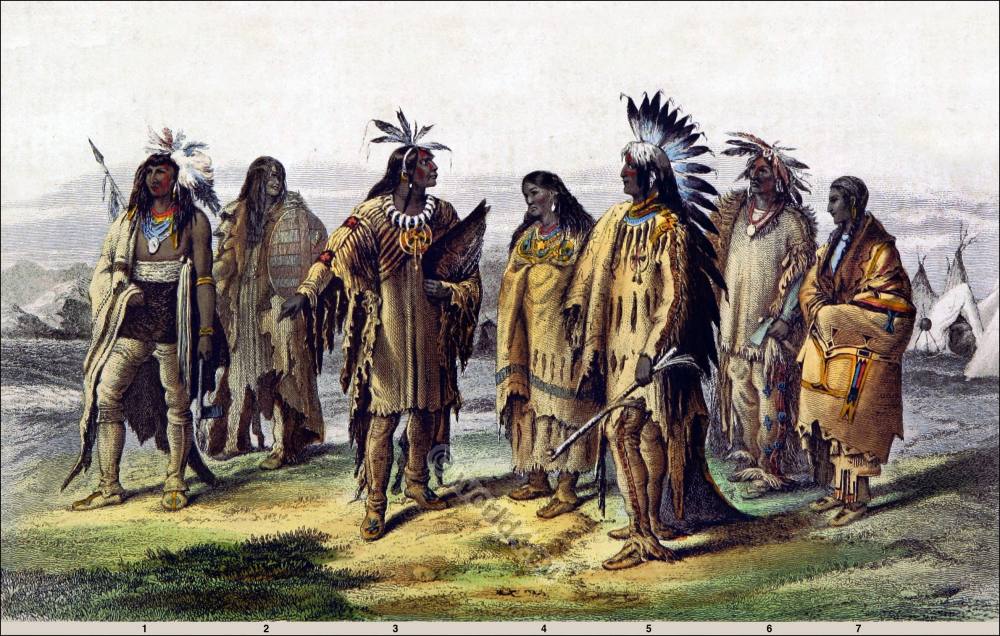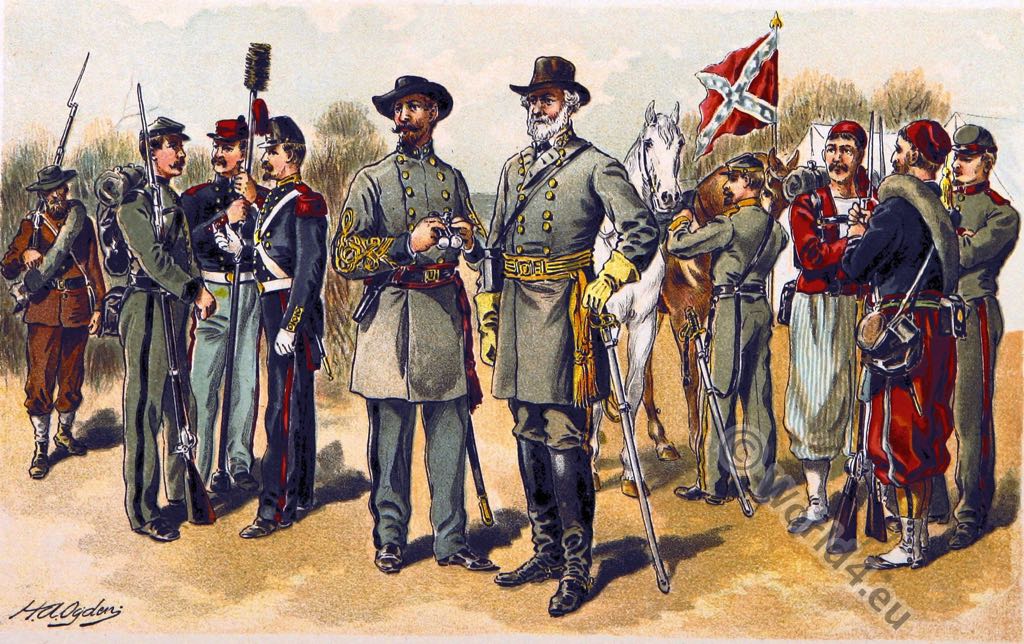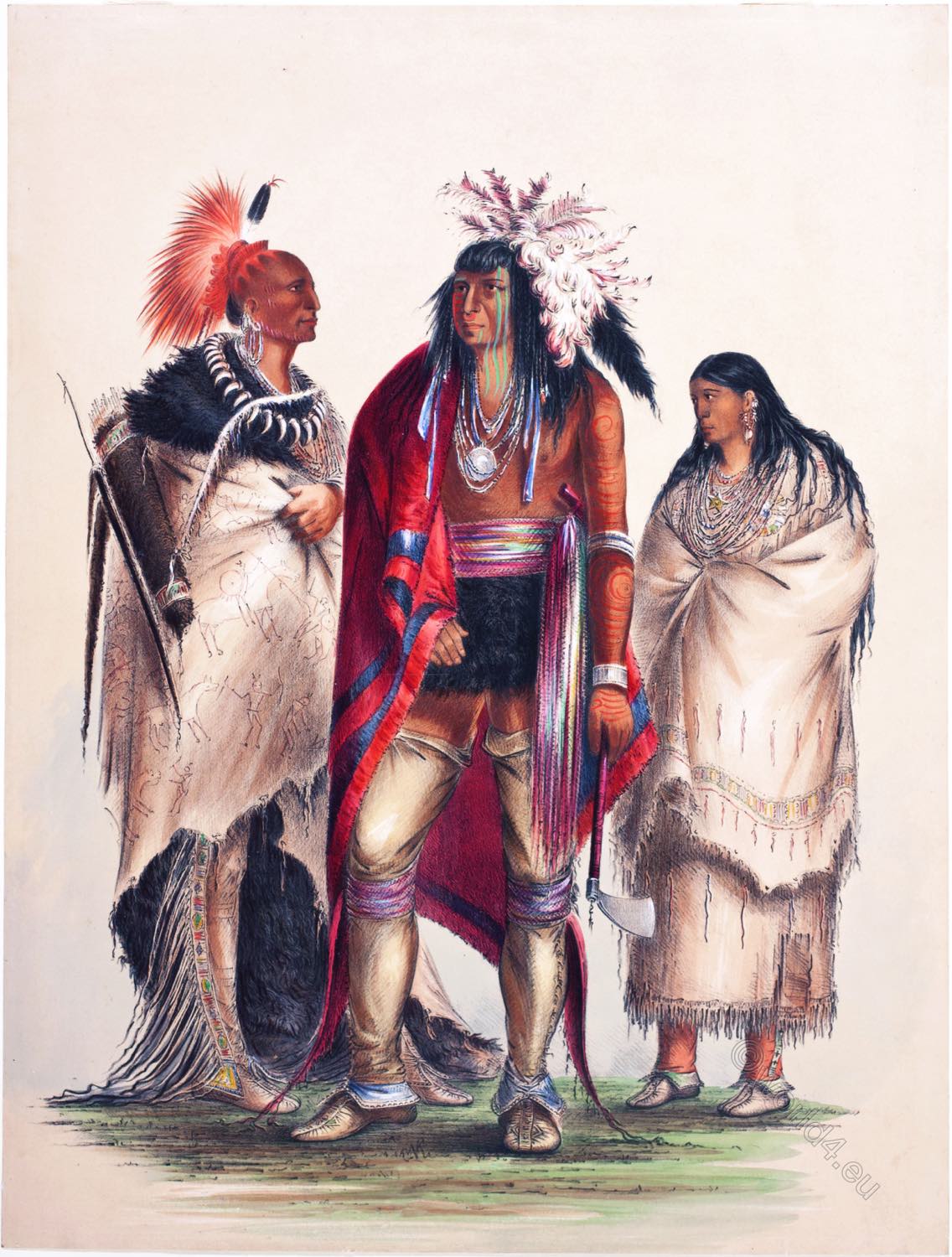THE WAPITI DEER
Cervus canadensis.
Plate XIX.
The Wapiti belongs to the group of true Deer of the genus Germs as restricted by recent authors. These animals, of which our Red Deer (Genus elaphus) is a familiar example, are only met with in the more northern parts of the Old and New World, their places in Southern Asia being taken by the Rusa Deer, and in the rest of America by the Brockets and other allied forms.
The Wapiti, or American Elk, as it is also called, though the latter term is apt to lead to confusion between it and the true Elk (Alces), a very different animal, is the only species of this limited group found in the New World, and is the largest and finest of the series. It exceeds in stature even the Red Deer of Europe, and its horns attain to greater size, pairs of the antlers shed in the Menagerie having been found to weigh as much as thirty-two pounds, notwithstanding all the disadvantages of confinement and artificial food.
The Wapiti, as we are informed by Professor Baird, “was once extensively distributed throughout the present limits of the United States. At the present time, however, in the eastern parts, it is only found in a few counties of Pennsylvania, where, indeed, their numbers are decreasing day by day. A few are known to exist in the Alleghanies of Western Virginia.
We next find them in the southern part of Michigan; but it is only as we proceed further west that they present themselves in numbers. In Minnesota they are found in large herds, and in still larger on the Upper Missouri, Yellowstone, and other streams. Of the vast numbers in these regions, some idea may be formed from the piles of shed horns, which the Indians are in the habit of heaping up in the prairies. One of these, in Elk-Horn prairie, about eighty miles above Fort Union, was for many years a conspicuous land-mark to the traveller, showing like a white monument many miles off. When torn down in the summer of 1850, it was about fifteen feet high, and twenty-five in circumference. Others, still larger, are found on the Upper Yellowstone.”
“The northern range of the Elk is given by Sir John Richardson, as the 56th or 57th parallel, and in high latitudes its eastern limit is found in a line drawn from the south end of Lake Winipeg to the Saskatchewan, and thence to Elk River. West of this line it extends to the Pacific, and south to Texas, New Mexico, and California.”
The Wapiti was, we believe, first bred in captivity at Knowsley, by the late Earl of Derby. Of late years the females of this Deer in the Zoological Society’s Menagerie have bred regularly every season, and the produce has been parted with to the late Lord Hastings, Lord Powerscourt, and other noblemen and gentlemen, who are attempting, with every prospect of success, to establish this noble animal in the pai’ks of this country.
The Society have also two other species of the true Deer equally adapted for similar experiments, both breeding readily in captivity, namely, the Barbary Deer (Getnis barbarus), of Tunis and Algeria, and the Persian Deer (Germs wallichii), of Circassia. The former species is already numerous in the park of Viscount Hill, to whom the Society are indebted for the examples of this Deer now in the Menagerie.
Source: Zoological sketches by Joseph Wolf (1820-1899). London: Henry Graves, 1861.

